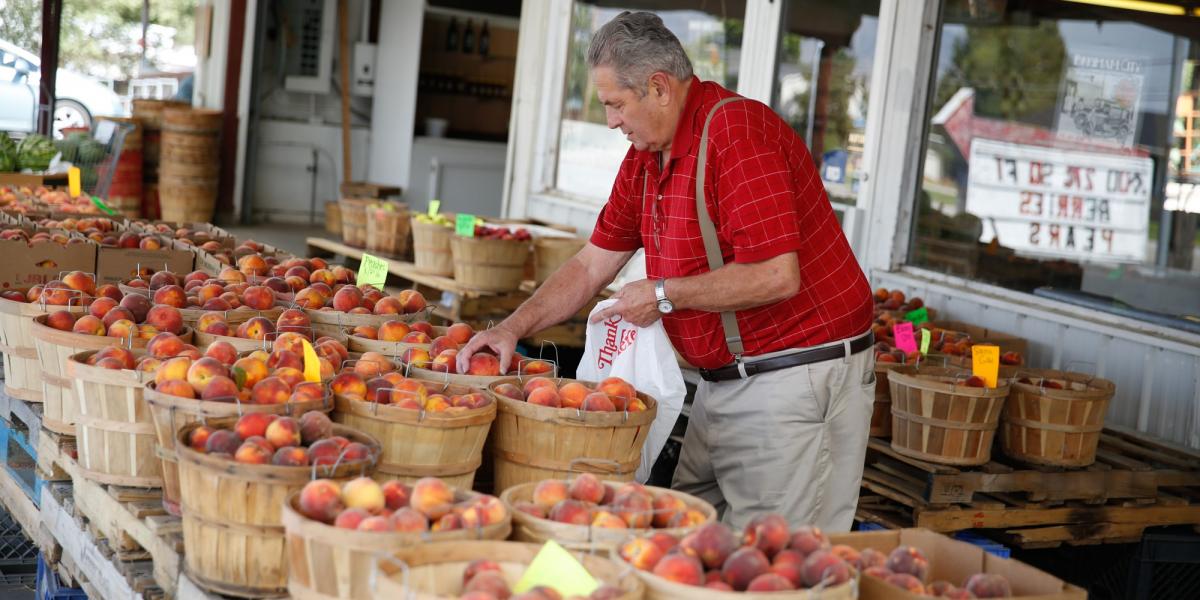Address
1 South Main St Room 20
Brigham City, UT 84302
Hours
Monday-Friday
8:00am - 5:00pm
Phone Numbers
435-734-3315

The regionally self-proclaimed route known as “Utah’s Famous Fruit Way" is an agricultural corridor cultivated for generations between Perry and Willard along both sides of Old Highway 89, a 10-mile stretch of state-maintained road running south from Brigham City. This narrow swath of agricultural bounty is situated in the shadows of Black Mountain, Willard Peak and Ben Lomond Peak to the east and the basin of the Bear River Valley and Great Salt Lake stretching far to the west. Here, the winter season chills fruit trees for enough hours to ensure optimal spring growth, and the summers are hot and relatively long at this latitude. And the rich soil from alluvial remnants of glacial prehistory set the literal groundwork for the area’s fertile landscape.
Like the ancestral indigenous people who arrived in the region more than 10,000 years ago through to the Shoshone communities that were militarily displaced from the area in the late 19th century, 1850s emigrants were drawn by the diverse hunting and plant gathering along the region’s mountain foothills, river valleys and bounteous marshlands. Brigham City was founded by Latter-Day Saint emigrants along Box Elder Creek to build mills and other water-dependent industries and for the ability to ramp up agricultural production quickly. Earthen dams, reservoirs, and a complex system of irrigation canals supplied water for livestock ventures, vegetable farms, and a multitude of fruit orchards. The rich soils here could also sustain dry crops without irrigation — those dependent upon scarce rainfall and moisture-trapping soils — like winter wheat, which fills the many granary silos that you’ll see all along the Wasatch Front corridor.
In 1869, the First Transcontinental Railroad joined the East and West Coasts of the United States near Promontory, Utah, allowing people and goods to travel quickly and safely from one end of the country to another. The railroad passed close to Brigham City, and a later rail traveling south passed right through. This opened new opportunities for Brigham City farmers to sell their produce to other parts of Utah and the United States. They exported leather and woolen goods and other farm and ranch products.
Some Japanese railroad workers settled in the area around Brigham City to start farms. They grew cherries and also developed Utah celery, which became famous and sought after around the nation.
One of Brigham City’s most famous products is its peaches. Peach growing in Brigham City started in 1855, when pioneer William Wrighton paid $1 for 100 peach pits to plant. The settlers found that peaches did especially well in Brigham City’s climate, with its warm days and cool nights. The peach harvest is celebrated every year in September during Peach Days. The event started in 1904 and draws thousands of attendees. During most of the summer, visitors traveling north on the historic U.S. Highway 89 through Willard, Perry, and Brigham City pass numerous fruit stands making up Utah’s Fruit Way, where they can buy local cherries, peaches, tomatoes, corn, squash, peas, melons and other seasonal produce.
Sources: visitutah.com and usu.edu
Photo Credit--Marc Piscotty and Compton Studio Collection